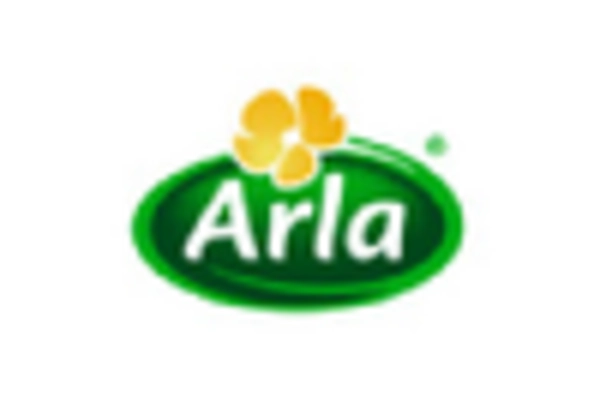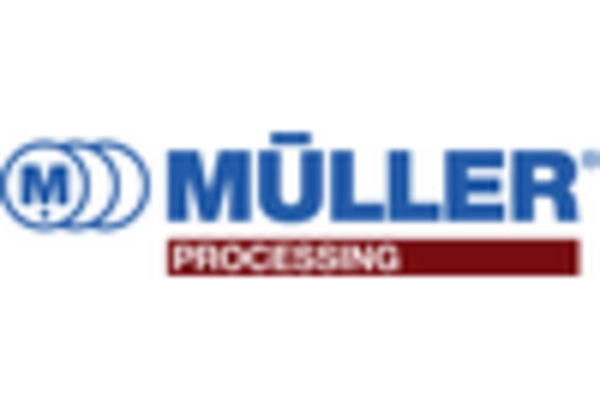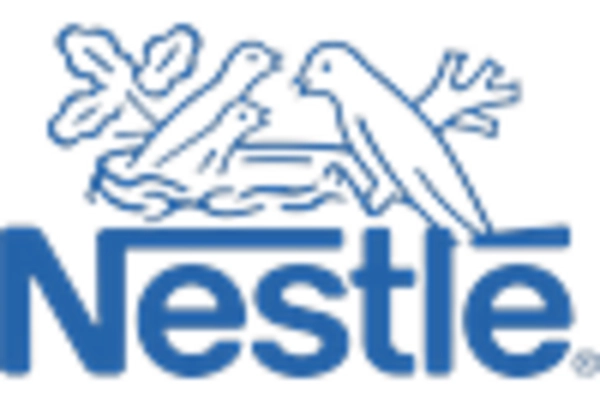Cultural Influence and Culinary Trends
Culinary trends and cultural influences play a significant role in shaping the cheese market in Germany. The increasing popularity of international cuisines has led to a greater appreciation for diverse cheese varieties, including those from Mediterranean and Eastern European regions. This cultural exchange appears to be driving demand for imported cheeses, which have seen a growth of approximately 10% in sales over the past year. Additionally, the rise of cooking shows and food blogs has heightened consumer interest in cheese pairings and recipes, further stimulating market growth. As culinary trends continue to evolve, the cheese market is likely to adapt, offering a broader selection of cheeses that cater to the tastes and preferences of a diverse consumer base.
Increasing Demand for Specialty Cheeses
The cheese market in Germany is experiencing a notable shift towards specialty cheeses, driven by consumer preferences for unique flavors and artisanal production methods. This trend appears to be fueled by a growing interest in gourmet food experiences, with consumers willing to pay a premium for high-quality products. In 2025, specialty cheeses accounted for approximately 30% of the total cheese market revenue in Germany, reflecting a significant increase from previous years. The rise of cheese festivals and tasting events further supports this trend, as they provide opportunities for consumers to explore diverse cheese varieties. As the demand for specialty cheeses continues to grow, producers are likely to innovate and expand their offerings, thereby enhancing the overall competitiveness of the cheese market in Germany.
Health Consciousness and Nutritional Awareness
In recent years, there has been a marked increase in health consciousness among German consumers, which is influencing their purchasing decisions in the cheese market. Consumers are increasingly seeking products that align with their health goals, such as lower-fat options and cheeses enriched with probiotics. This shift is reflected in the growing sales of reduced-fat and functional cheeses, which have seen a rise of approximately 15% in market share over the past two years. Additionally, the cheese market is adapting to these trends by introducing innovative products that cater to health-oriented consumers. As awareness of nutritional benefits continues to rise, it is likely that the cheese market will see further diversification in product offerings to meet these evolving consumer demands.
Sustainability and Ethical Production Practices
Sustainability has emerged as a critical driver in the cheese market, particularly in Germany, where consumers are increasingly concerned about the environmental impact of their food choices. The demand for sustainably produced cheeses, which adhere to ethical farming practices, is on the rise. In 2025, it is estimated that around 25% of cheese sales in Germany are attributed to products labeled as organic or sustainably sourced. This trend suggests that consumers are willing to support brands that prioritize environmental stewardship and animal welfare. As a result, cheese producers are likely to invest in sustainable practices, such as reducing carbon footprints and improving animal husbandry, to appeal to this growing segment of environmentally conscious consumers.
Technological Advancements in Cheese Production
The cheese market in Germany is witnessing a transformation due to technological advancements in production processes. Innovations such as automation, precision fermentation, and improved supply chain management are enhancing efficiency and product quality. These advancements not only reduce production costs but also enable manufacturers to meet the increasing demand for diverse cheese varieties. In 2025, it is projected that the adoption of technology in cheese production could lead to a 20% increase in output without compromising quality. As producers embrace these technologies, the cheese market is likely to become more competitive, with a wider array of products available to consumers, thereby driving further growth in the sector.

















Leave a Comment